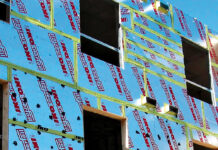By Richard Lyall
RESCON
Toronto and the GTA are in the middle of a water crisis – not from your tap, but everything that’s flushed down your drains, falls from the sky or collects below ground.
The City of Toronto has been updating its groundwater management strategy to explore future infrastructure planning and groundwater discharge system options. Highrise condominiums come into sharp focus because of the current requirements to build underground parking garages.
Typically, when excavations extend deeper than two storeys, there is an excellent chance of hitting the water table. At the same time that the City demands underground parking, Toronto Water wants these structures in new condo buildings to be completely watertight, which is unrealistic on a permanent basis without replacing our aging underground sewer infrastructure.
Stormwater management
As we experience more frequent heavy rainfall in the GTA, stormwater management becomes even more critically important. Yet, Toronto suffers from antiquated combined sewers (stormwater and sanitary sewers combined into a single pipe). During wet weather events, the volume of stormwater often exceeds the sewer system’s capacity and the sewer overflows, which can result in the release untreated sewage into our rivers and lakes.
Homeowners have experienced flooded basements while, in certain areas of the city, underground parking becomes a repository of excess water. Property is damaged, but worse things can happen. Think of the two men who were trapped in an elevator inside a flooded underground parking lot near Jane and St. Clair – police arrived just in time to save them.
A recent report by the Residential and Civil Construction Alliance of Ontario states that a parking spot in one of these new garages costs between $80,000 to $100,000. This is a cost that many new-home buyers cannot afford and do not want to pay if they don’t own a vehicle.

Possible solutions
Here’s a solution: Tell your local councillor that the city needs to reduce parking requirements, especially in areas that are well-served by transit. This trend is happening in many jurisdictions, with cities such as Melbourne, Australia, looking to eliminate minimum parking requirements altogether. Other cities allow for parking to be provided off-site. Elsewhere, forward-thinking planners are promoting aboveground parking structures.
Parking demand will fall over time as transportation habits evolve with more people relying on ride-hailing services such as Lyft and Uber. This will make much of today’s parking spaces obsolete in 20 years. Unlike underground parking, above-ground parking can be repurposed for residential or commercial uses as demand shifts in the future.
Constrained sewer infrastructure and stormwater management is a major barrier to overcome for new development and construction in an intensifying urban environment. Let’s help by recognizing new mobility trends and building parking that is appropriate to the context. Let’s see where this important policy conversation takes us.

Richard Lyall is president of the Residential Construction Council of Ontario (RESCON). rescon.com












